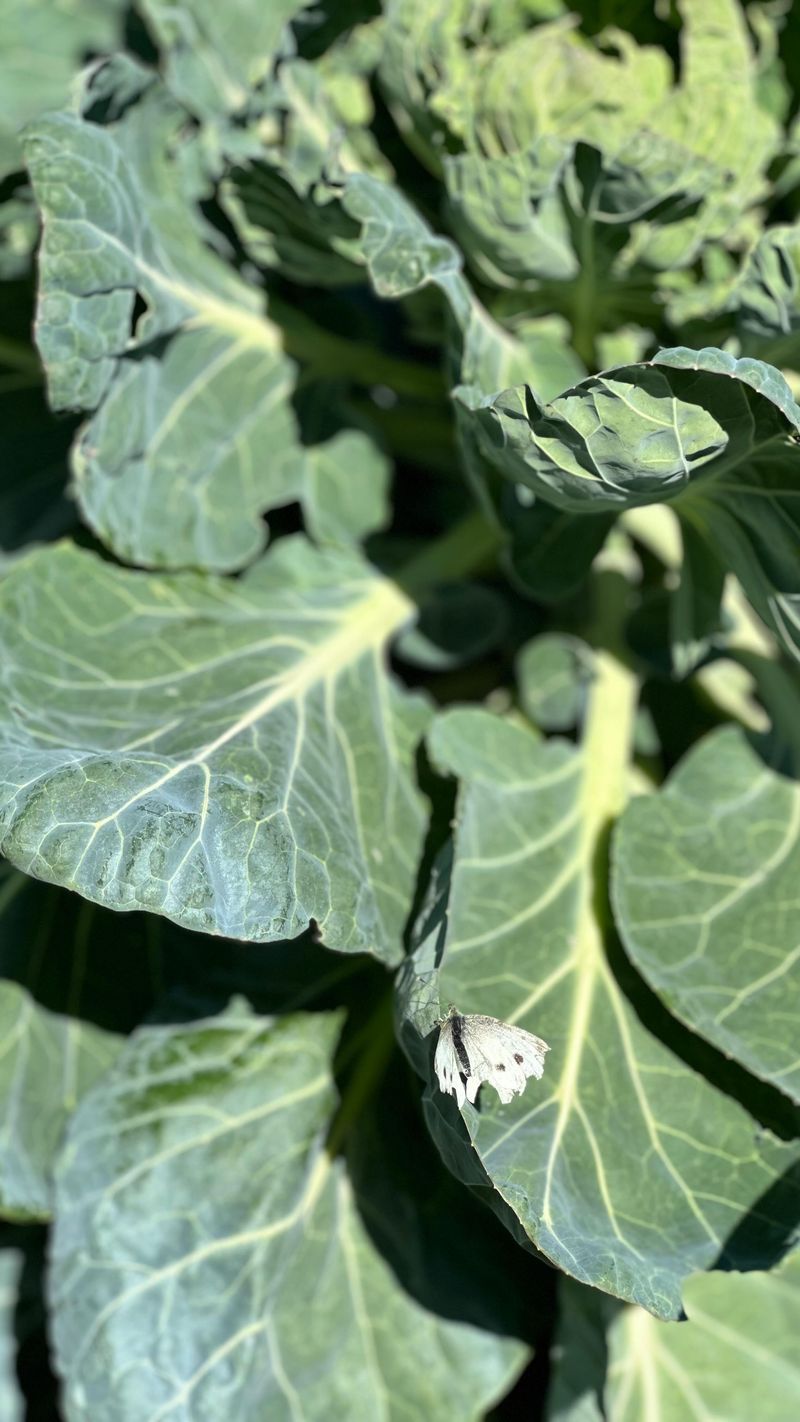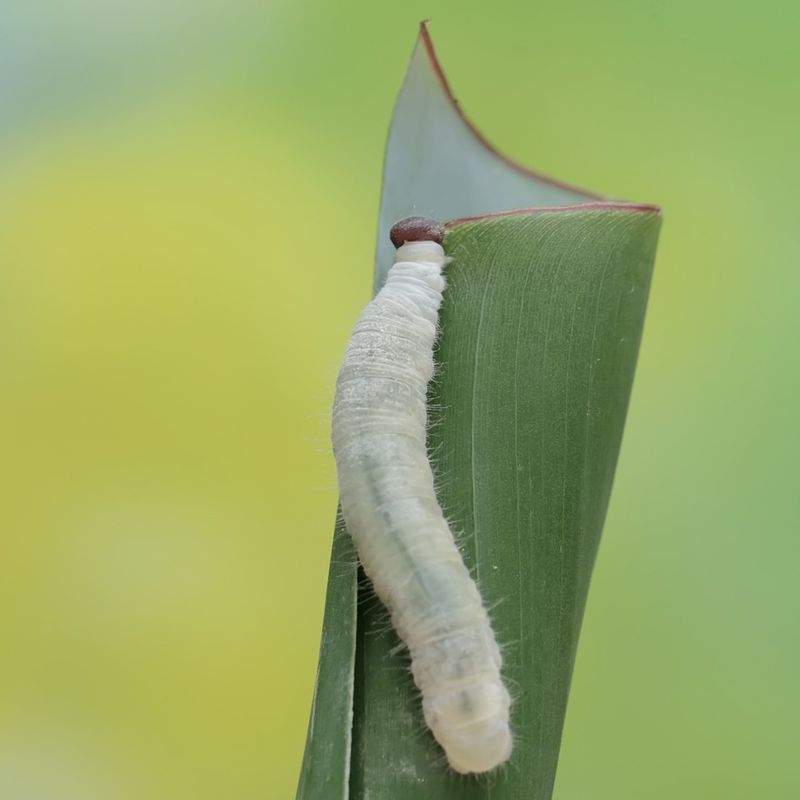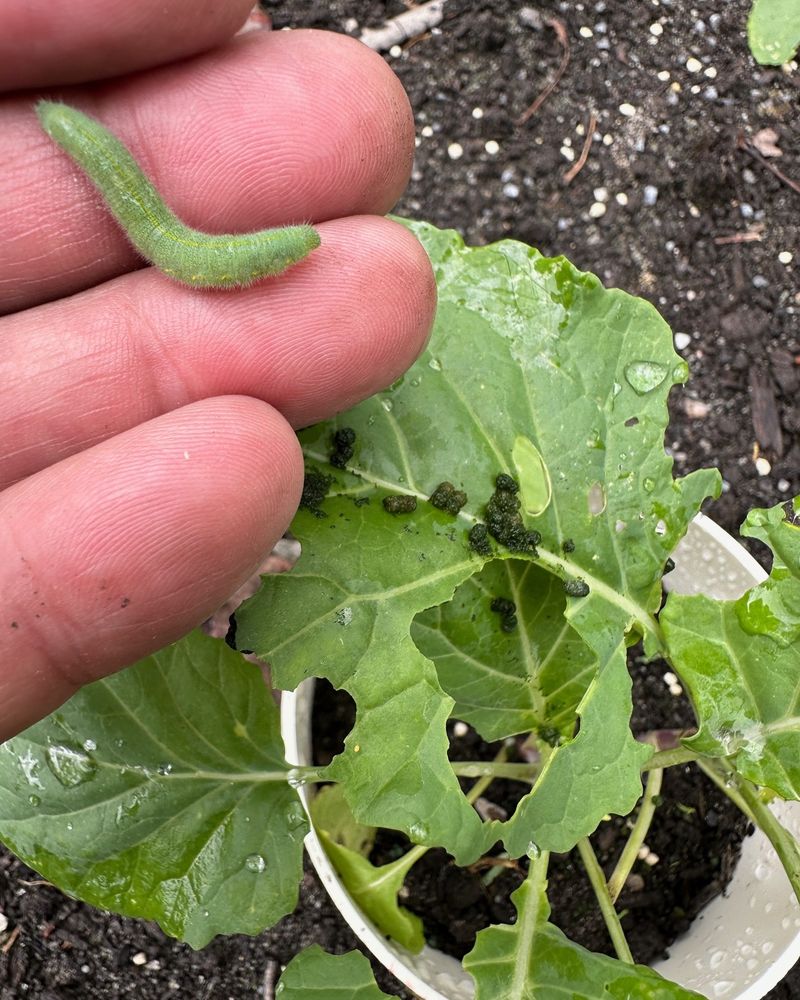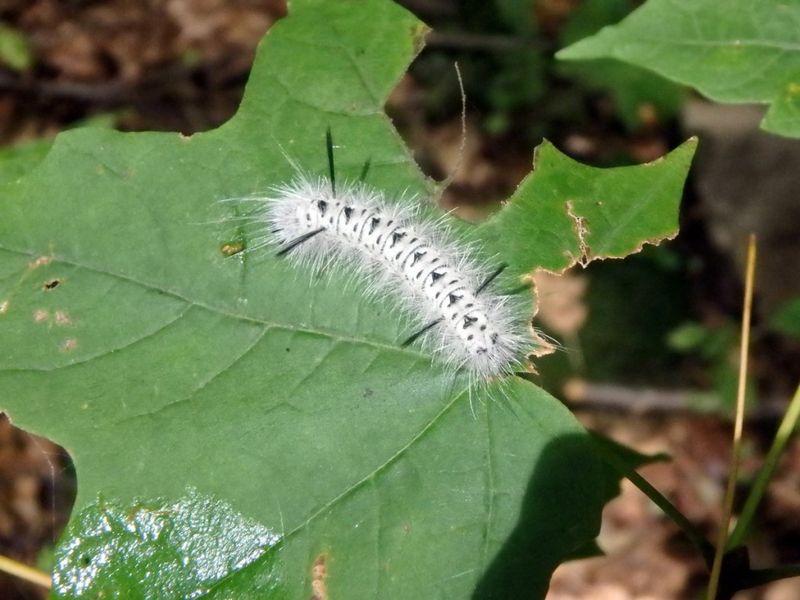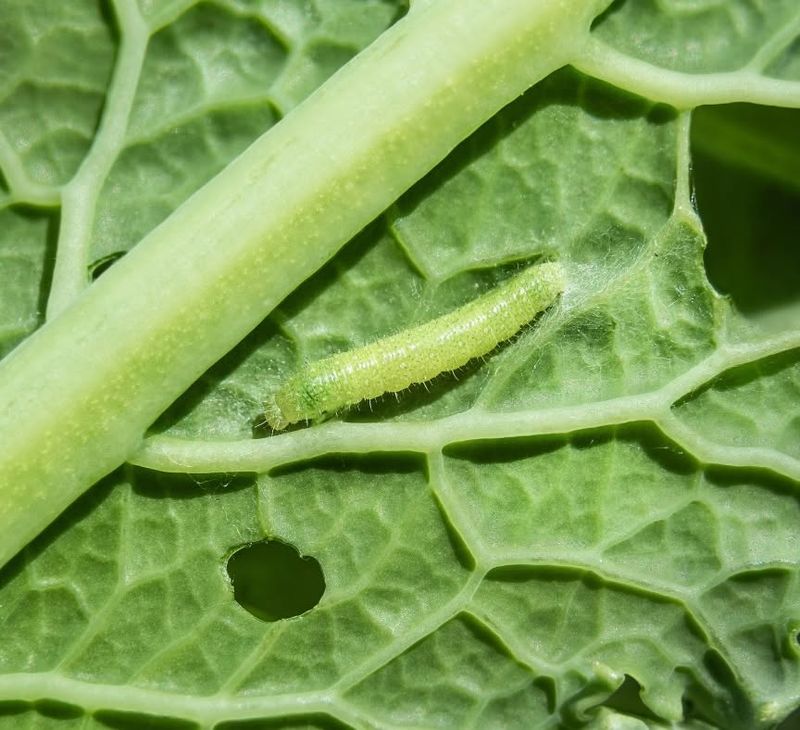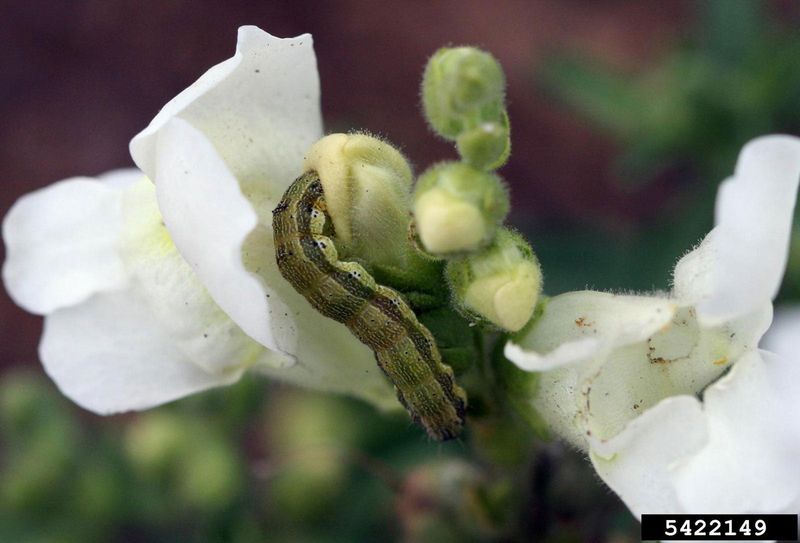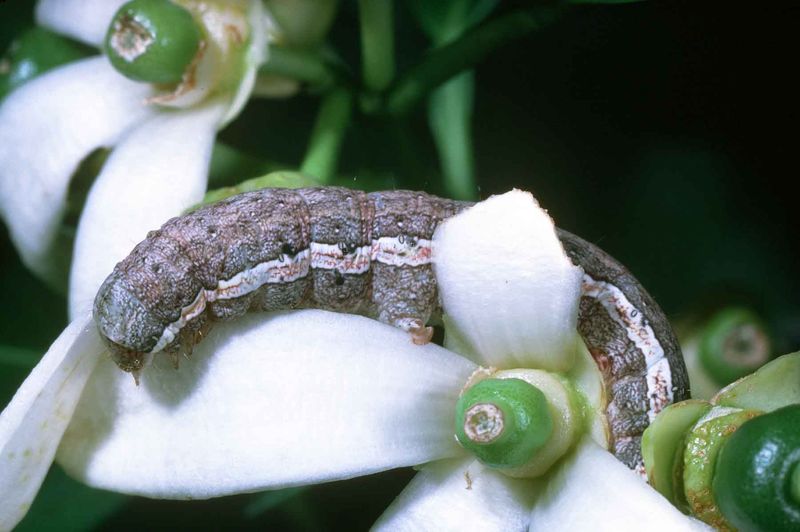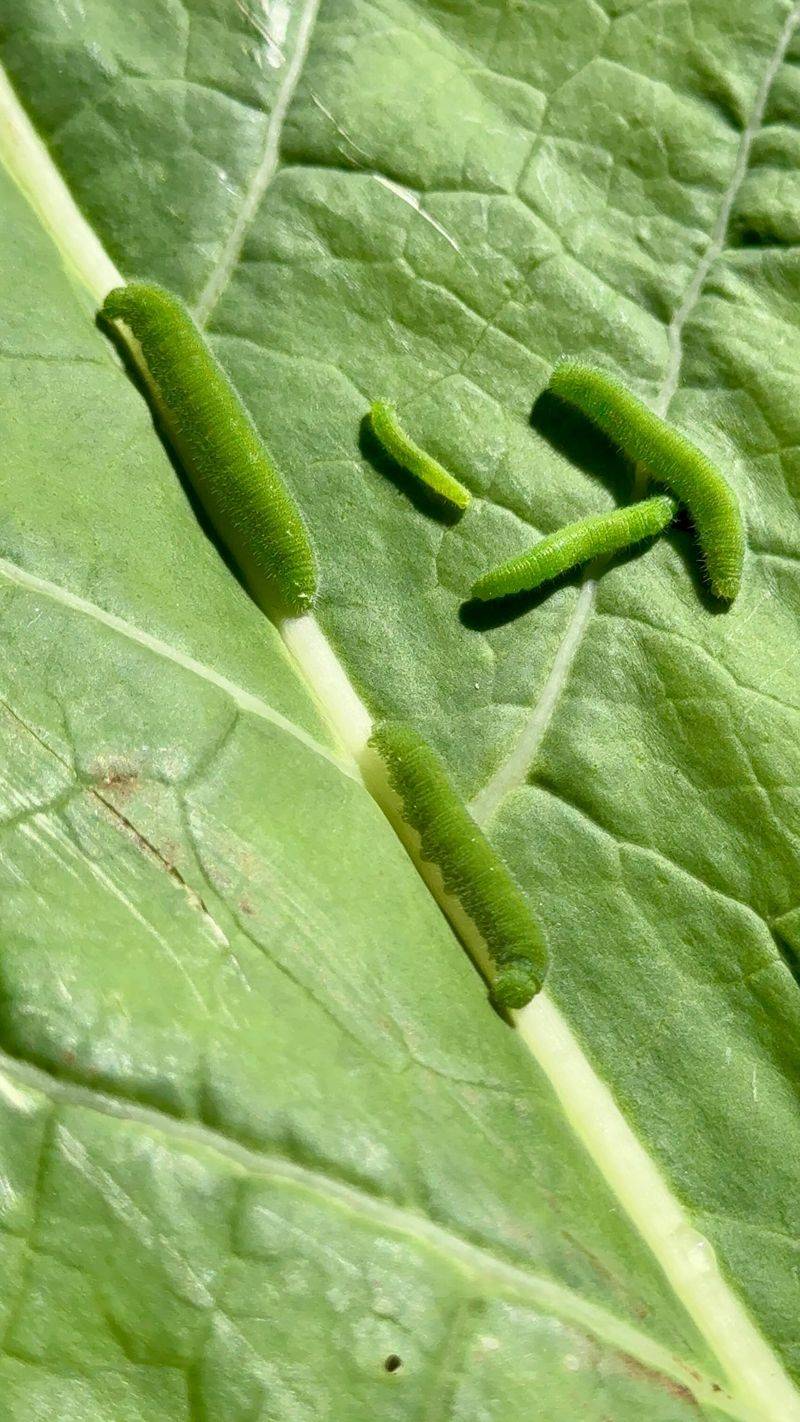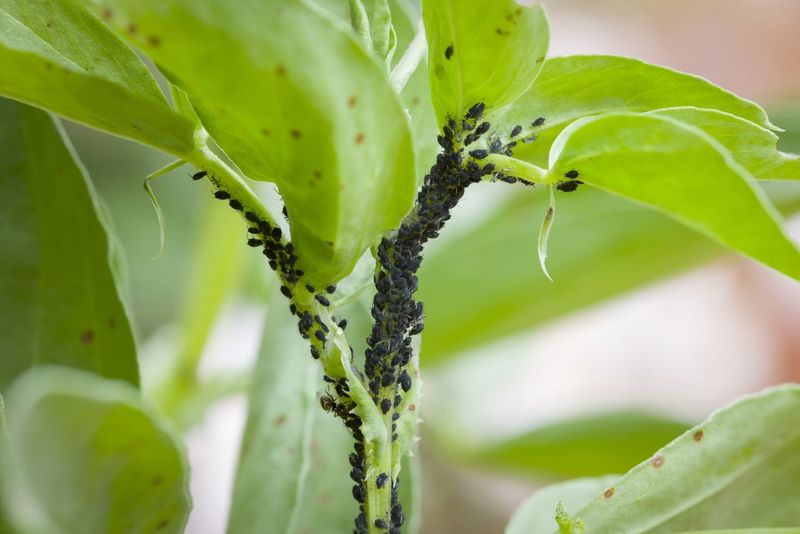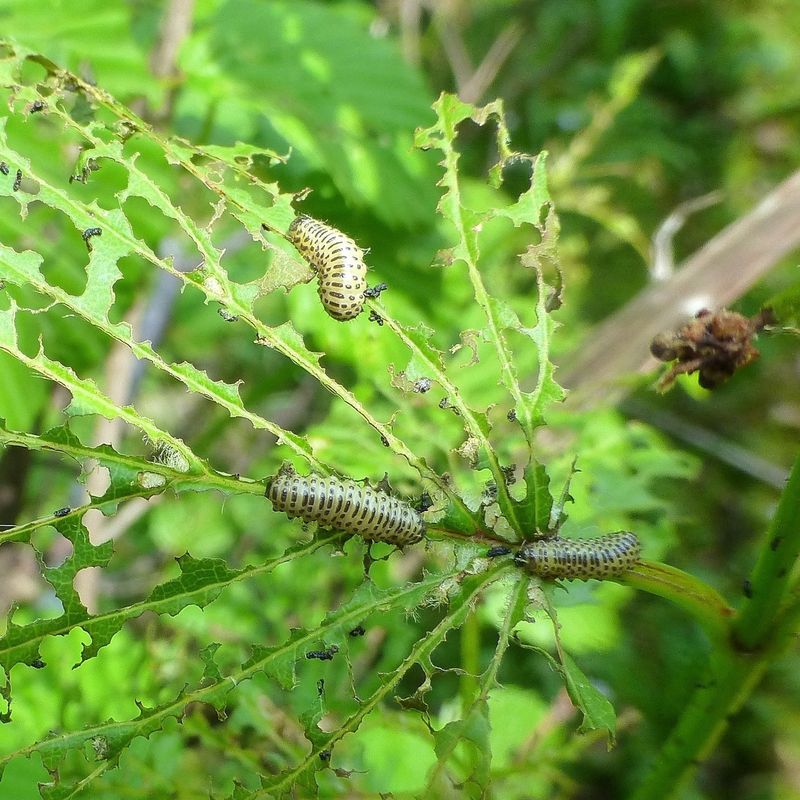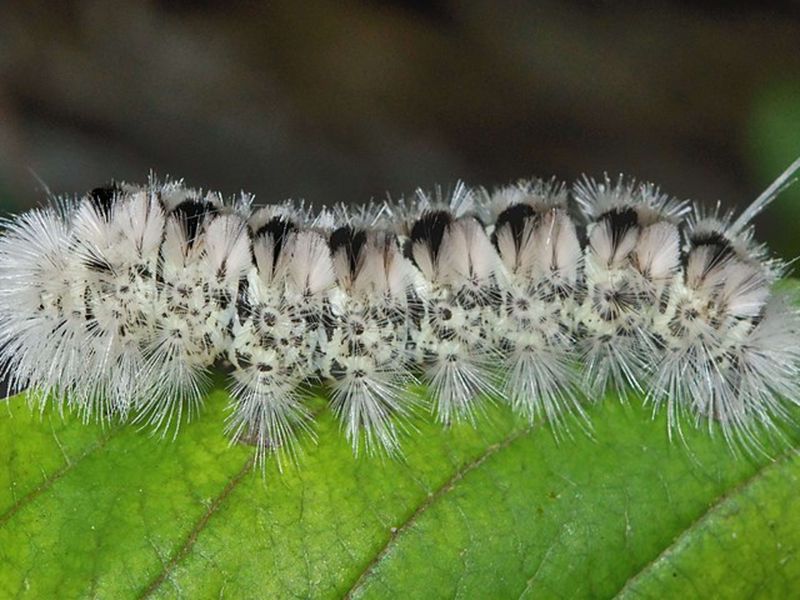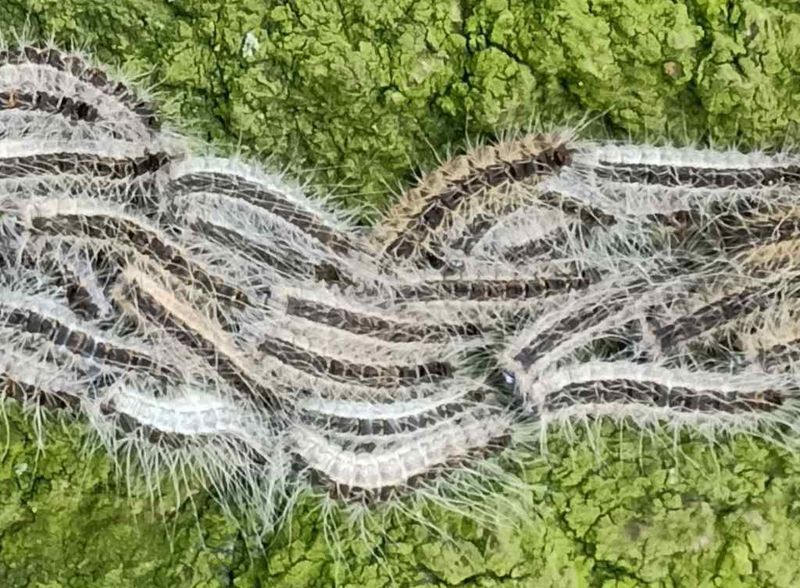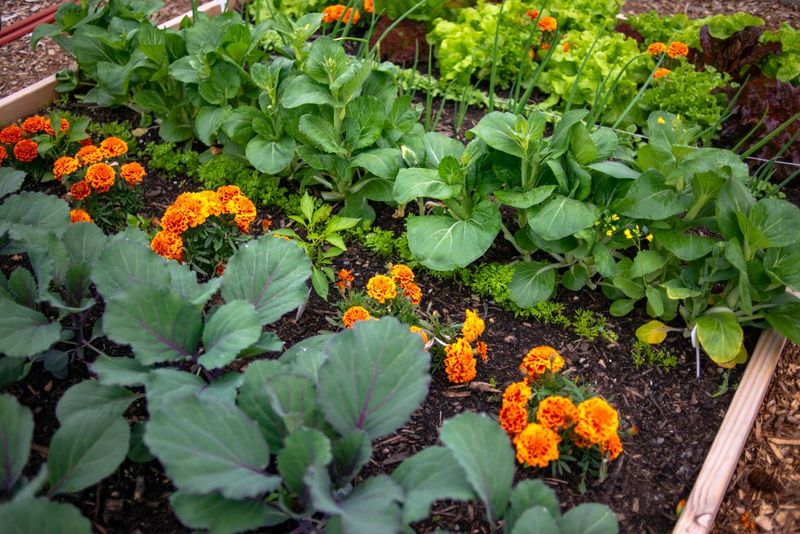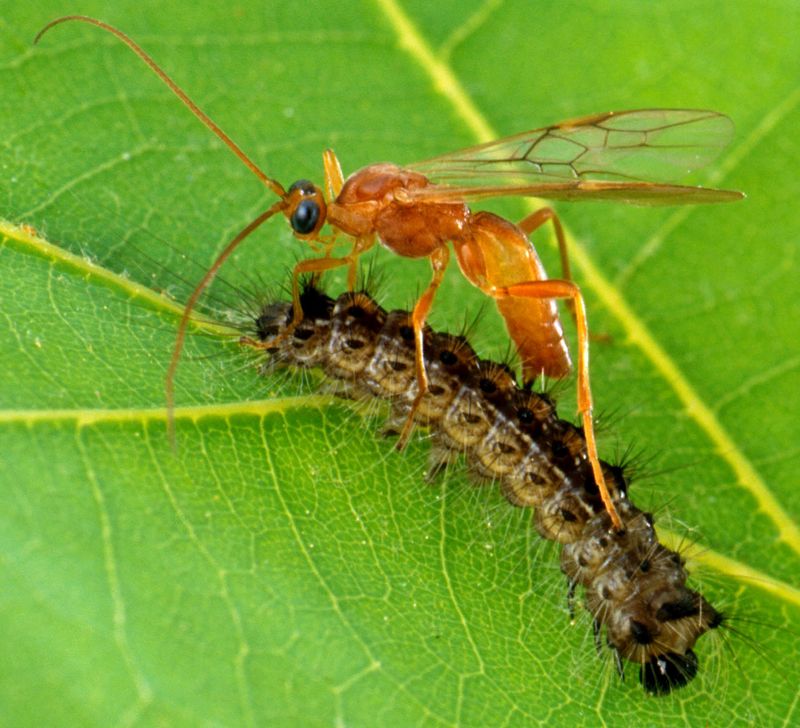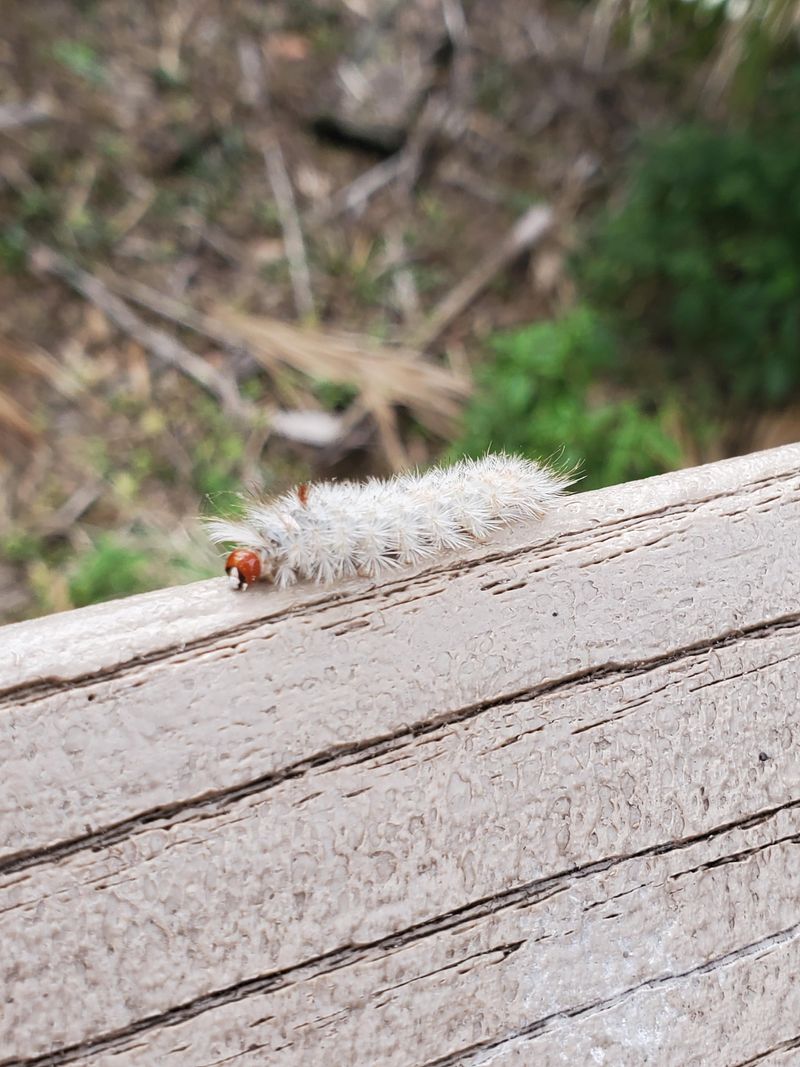White caterpillars may look harmless, but don’t be fooled—they’re stealthy garden wreckers. From devouring leaves to destroying entire crops, these fuzzy pests can wreak havoc fast.
Discover 12 reasons they’re bad news for your garden, plus 6 proven ways to kick them out—for good.
1. Voracious Leaf Destroyers
White caterpillars have enormous appetites that seem impossible for their tiny bodies. A single cabbage white butterfly caterpillar can devour three times its body weight in plant material daily!
Their feeding frenzy leaves plants with skeletonized leaves and tattered remains. Garden vegetables like cabbage, kale, and broccoli often suffer the worst damage, with entire crops being decimated in severe infestations.
2. Hidden Damage Beneath Plants
Many white caterpillar species work undercover, hiding beneath leaves during daylight hours. This sneaky behavior makes them difficult to spot until significant damage has already occurred.
By the time you notice the holes in your plants, dozens of caterpillars might be feasting below. Their stealthy nature allows populations to build up rapidly, turning a small problem into a garden disaster within just a few days.
3. Rapid Population Explosion
Female moths and butterflies that produce white caterpillars can lay hundreds of eggs at once. A single cabbage white butterfly might deposit 300-400 eggs during her lifetime!
These eggs hatch quickly in warm weather, sometimes in just 3-5 days. Without natural controls, this reproductive capacity means your garden can suddenly host thousands of hungry caterpillars. Their numbers multiply so rapidly that plants have no chance to recover between feeding cycles.
4. Vegetable Crop Devastation
Gardeners growing brassicas (cabbage family plants) face the worst destruction from white caterpillars. These pests have a particular fondness for broccoli, cauliflower, kale, and Brussels sprouts.
The damage goes beyond mere leaf holes. White caterpillars burrow into the developing heads of cabbage and cauliflower, leaving behind not just damage but also their droppings. Once they’ve infiltrated these crops, the vegetables become unsalvageable and must be discarded entirely.
5. Disease Transmission Vectors
While munching through your garden, white caterpillars can spread plant diseases from infected plants to healthy ones. Their feeding creates wounds that become entry points for bacteria and fungi.
Many gardeners don’t realize these pests are disease carriers until multiple plants show symptoms. The combination of physical damage and disease introduction creates a double threat to garden health. Even plants that survive the initial feeding may succumb to secondary infections later.
6. Growth Stunting of Young Plants
Seedlings and young plants suffer disproportionately when white caterpillars attack. Their tender growth is especially vulnerable to caterpillar feeding, often resulting in permanent stunting.
Even if the plant survives, the early damage affects its entire growth cycle. Plants attacked during early development produce fewer flowers and fruits later in the season. Many gardeners find their carefully nurtured seedlings destroyed overnight by hungry white caterpillars.
7. Contamination With Frass
The polite term for caterpillar poop is “frass,” but there’s nothing polite about finding it all over your vegetables. White caterpillars produce significant amounts of waste as they feed constantly.
This frass contaminates edible crops and can harbor harmful bacteria. Leafy greens become particularly unappetizing when covered with caterpillar droppings. Even after washing, many gardeners discard heavily frass-contaminated produce rather than attempt to clean it.
8. Flower Bud Destruction
Many gardeners don’t realize white caterpillars target flower buds as well as leaves. These protein-rich buds provide perfect nutrition for growing caterpillars.
When caterpillars eat flower buds, they eliminate any chance of those flowers producing fruit or seeds. Ornamental gardens suffer aesthetic damage, while vegetable gardens lose potential yield. A single caterpillar can destroy dozens of flower buds in just one day of feeding.
9. Underground Root Attacks
Some white caterpillar species, like cutworms, attack plants below the soil line. These nocturnal feeders emerge at night to chew through stems at ground level, causing plants to topple mysteriously.
Root-feeding white caterpillars can kill plants without any visible above-ground feeding. Many gardeners mistakenly blame other issues when plants wilt and die. By the time the true culprit is discovered, these underground attackers may have moved on to neighboring plants.
10. Resilience to Many Pesticides
Over decades of chemical pesticide use, many white caterpillar species have developed resistance to common treatments. The cabbage white butterfly caterpillar, in particular, quickly adapts to chemical controls.
This resistance makes these pests particularly difficult to manage with conventional methods. Products that worked well in previous years suddenly seem ineffective. The caterpillars’ ability to detoxify certain chemicals gives them a survival advantage that frustrates even experienced gardeners.
11. Attraction of More Pests
Damaged plants emit chemical signals that actually attract more pest insects. White caterpillar feeding creates a cascade effect, where initial damage leads to increased vulnerability.
These plant stress signals can draw in not just more butterflies and moths, but also aphids and other opportunistic pests. A garden with white caterpillar damage becomes a beacon for multiple pest species. This compounding effect turns a manageable problem into a garden-wide infestation.
12. Season-Long Threat
Unlike some garden pests that appear briefly, white caterpillars can threaten gardens from spring through fall. Many species produce multiple generations each growing season.
Just when you think you’ve controlled an outbreak, a new wave of eggs hatches. This persistent presence requires vigilance throughout the growing season. Without regular monitoring, successive generations can build to devastating numbers by late summer, destroying fall garden crops.
13. Hand-Picking for Immediate Control
The most direct approach to white caterpillar control is simply removing them by hand. Morning and evening inspections of plants, especially leaf undersides, can catch these pests in the act.
Drop collected caterpillars into soapy water to dispatch them humanely. While labor-intensive, this method provides immediate results without chemicals. Children often enjoy helping with this garden task, turning pest control into an educational opportunity about garden ecosystems.
14. Bacillus thuringiensis: A Gardener’s Secret Weapon
Bacillus thuringiensis (Bt) is a naturally occurring soil bacterium that produces proteins toxic only to caterpillars. When caterpillars ingest Bt-treated leaves, the proteins disrupt their digestive systems.
This biological control affects only caterpillars, leaving beneficial insects unharmed. Apply Bt spray in the evening when caterpillars are actively feeding. The bacteria breaks down in sunlight, so timing application for maximum effectiveness is important.
15. Barrier Methods with Row Covers
Physical barriers like floating row covers prevent adult butterflies and moths from laying eggs on your plants. These lightweight fabric covers allow light, air, and water to reach plants while keeping pests out.
Secure the edges with soil or pins to prevent insects from crawling underneath. For plants that need pollination, temporarily remove covers when flowers appear. This preventative approach works best when installed before pest butterflies become active in your area.
16. Companion Planting Strategies
Certain aromatic plants naturally repel the butterflies and moths that produce white caterpillars. Thyme, rosemary, sage, and mint release scents that confuse these pests and mask host plant odors.
Interplant these herbs among vulnerable vegetables for natural protection. Marigolds and nasturtiums can serve as trap crops, attracting caterpillars away from your valuable plants. This ancient gardening technique reduces pest pressure without any sprays or chemicals.
17. Encouraging Beneficial Predators
Nature provides excellent caterpillar control in the form of predatory insects and birds. Parasitic wasps lay eggs inside caterpillars, while birds feast on these protein-rich garden pests.
Create habitat for these allies by including flowering plants like yarrow, dill, and cosmos in your garden. Avoid broad-spectrum insecticides that kill beneficial insects along with pests. A diverse garden naturally attracts the predators that keep white caterpillar populations in check.
18. Neem Oil Applications
Extracted from the neem tree, this botanical insecticide disrupts caterpillar feeding and growth cycles. Unlike harsh chemicals, neem oil breaks down quickly in the environment.
Apply as a foliar spray, covering both upper and lower leaf surfaces where caterpillars feed. Neem works best on young caterpillars before they’ve caused significant damage. The oil’s bitter compounds make plants unpalatable to pests while being safe for humans when used as directed.


